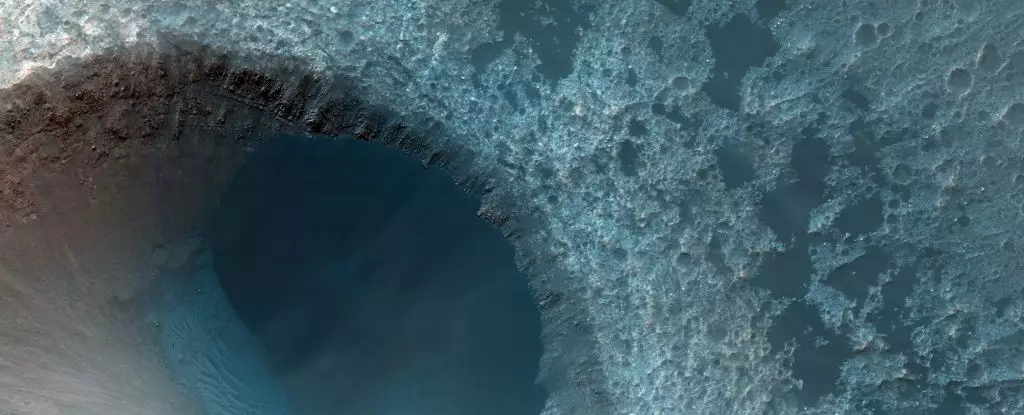In the vast expanse of the Solar System, chunks of Martian rock have found their way to Earth. These rocks, ejected from Mars through violent impacts, have given scientists a glimpse into the geological processes on our neighboring planet. However, a peculiar pattern has emerged as these samples were analyzed. Most of the rocks collected seem to be relatively young, contrary to the age of the Martian surface. This discrepancy has puzzled scientists and led to uncertainty in dating techniques.
A team of researchers from the University of Glasgow and other institutions in the US and UK have made a groundbreaking discovery that could shed light on the age of these Martian rocks. Led by volcanologist Ben Cohen, they have found a way to resolve the problem of inaccurate age estimates. Surprisingly, their findings reveal that many of the rocks are indeed quite young, only a few hundred million years old. These findings not only provide insights into the time it took for these meteorites to reach Earth but also offer clues about geological processes on Mars.
Determining the source of these meteorites is crucial in understanding the origin and geological history of Mars. With around 360 meteorite samples identified as having a Martian origin, the researchers focused on shergottite, a type of metal-rich Mars rock formed through volcanic activity. Considering the heavily cratered surface of Mars, it has been assumed that the planet is old. If the Martian surface was younger and refreshed by volcanic activity, many of the craters would have been erased. Therefore, any rocks ejected from Mars should also be old. However, dating techniques on shergottite on Earth have been complicated by their composition, leading to what has been dubbed the “shergottite age paradox.”
To determine the age of shergottite, scientists typically employ the argon-argon dating method. This technique relies on the decay of radioactive potassium into argon. By analyzing the ratio of argon isotopes, scientists can determine the length of time the radioactive decay has been occurring and therefore date the rock sample. However, when it comes to shergottite samples, the presence of various sources of argon from both Earth and space adds complexity to the dating process. While Earth rocks have three potential sources of argon, shergottite samples have five.
In order to overcome this complexity and accurately date the Martian rocks, Cohen and his colleagues developed a method to correct for argon contamination from Earth and space. By compensating for these additional sources of argon, they were able to determine the true ages of the shergottite samples. The results were astonishing. The seven samples they dated ranged in age from 161 million to 540 million years old. These ages aligned perfectly with other dating methods such as Uranium-Lead, leading to a breakthrough in resolving the shergottite age paradox.
The reason behind the unexpected youthfulness of these rocks lies in the constant bombardment of Mars, which has shattered the older surface and exposed younger rock beneath. This younger rock has been replenished by ongoing volcanic activity on Mars. The frequent impacts on the planet dislodge and eject these younger rocks into space, eventually making their way towards Earth. Scientists estimate that Mars experiences around 200 impacts each year, resulting in craters larger than 4 meters in diameter. This ongoing bombardment and volcanic activity explain the occurrence of younger rocks being flung towards our planet.
This new discovery not only solves the mystery of the Martian rocks’ ages but also provides valuable insights into the geological processes occurring on Mars. It unveils the dynamic nature of the planet, with volcanic activity continuously shaping its surface. The findings suggest that ongoing volcanic activity on Mars could still be occurring today, further emphasizing the need for exploration and research into our neighboring planet.
The study conducted by the team led by Ben Cohen has shed light on the age and origin of Martian rocks. Through their innovative approach to argon-argon dating and the careful consideration of multiple sources of argon contamination, they have successfully resolved the shergottite age paradox. Their findings highlight the volcanic activity and constant bombardment that shapes Mars’ surface. As humans continue to explore the mysteries of space, Mars remains a fascinating subject, and these discoveries bring us one step closer to unraveling its secrets.



Leave a Reply